More Proof It’s the Teaching, Not the Tech
A MiddleWeb Blog
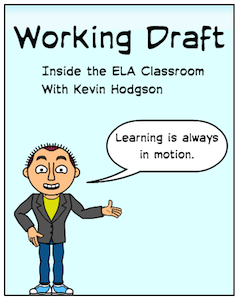
It’s been fantastic – from using its Avatar Creator Tool to talk about digital identity in online spaces, to creating single-panel Six Word Memoirs as a way to teach focus and brevity in writing, to creating comic-style book reviews to share favorite novels.
Each year, I have launched my sixth graders on their digital composition journey in the first weeks of school by having them create “Dream Scenes” – a webcomic story of sorts that reliably provided me with insights into their aspirations for the future.
Those Dream Scenes often became discussion points throughout the entire year, from shared points of interest (“So, you want to be a musician/teacher/writer, too?”) to curiosity (“I’m not sure how one becomes a Mechanical Engineer. What do you say we look that one up?”).
With its closed borders to and from the outside world (unless otherwise designated); its ability to create distinct classroom communities of students; and its variety of handy settings for teachers to use in managing the comic space, Bitstrips for Schools really met a lot of my needs as a teacher seeking to integrate words and art – and just as important, comics – to very receptive sixth grade writers.
(Bitstrips for Schools is not to be confused with the public Bitstrips site, which seems to have been killed off too, replaced by the Bitstrips Emoji app that I don’t have much interest in.)
So, imagine my surprise and disappointment when I went to the Bitstrips for Schools site in August, only to discover this sign posted on the homepage:
The dilemma of “free” technology
This summer, as one of the many facilitators of the Connected Learning Massive Open Online Collaboration (CLMOOC), I took part in one of the weekly Twitter Chats. Interestingly, the conversation turned to our reliance on “free” technology. Bud Hunt (former classroom teacher and technology coordinator now working at a public library, and a colleague of mine in the National Writing Project) offered up the observation that educators and school systems need to wean themselves away from “free.”
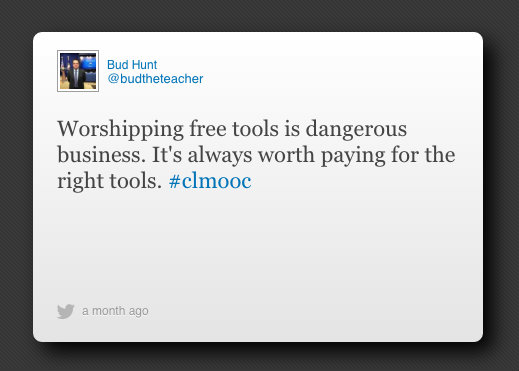
Bud’s larger point in the CLMOOC Twitter Chat was that school districts need to pony up the dollars to pay for technology that should be woven into curriculum, because the technology should not be deemed separate from the learning. The technology should be the fabric the learning, or why use the technology at all?

Searching for something new
I was lucky, I guess, in that I was able to use Bitstrips for Schools for many years at no cost because of some initial beta testing of the site. Other teachers were paying for the site. I am grateful for what I was able to do, but now I am scrambling.
When my friend Mary Lee Hahn asked me what alternatives there might be for Bitstrips for Schools, I suggested looking at Pixton for Schools while she wondered about Storyboard That. Both cost money, and I am reminded again of Bud Hunt’s point. But for now, at least for me, neither of these services is in the budget that I have to work with.
And yet even amidst that panicky feeling of “What now?” I am coming to understand two important insights.
First of all, the Dream Scenes project was something I did on paper before technology ever came into the picture for me. We once used color pencils and handwritten text. In fact, before we used Bitstrips for Schools, my students were using Microsoft Paint and Microsoft PhotoStory 3 to make digital Dream Scene stories.
Then … you guessed it … PhotoStory 3 went the way of the Dodo Bird, too. What I am saying is, the Dream Scene project is not about the technology. It’s about the way it allows me to connect with my students. The Dream Scene project was never Bitstrips or PhotoStory, although each provided important lessons about composition in the digital age. It was always about the kids and their dreams.
Secondly, the loss of the webcomic site also provides me with an opportunity. Where will the Dream Scene project go now? Here’s my latest thinking: We will bring it into Google Slides, and have students create a multi-framed slideshow, choosing images that represent their aspirations and overlaying their writing pieces on top of the images.
This approach will allow me to teach mini-lessons on Design of Digital Media (what kind of font? what color? Busy versus Quiet?) and how to search for Creative Commons images and use citations, right at the start of the year.
As always, though, I figured I better work on my own mentor text example of my Dream Scene. Someday, I want to be a writer.

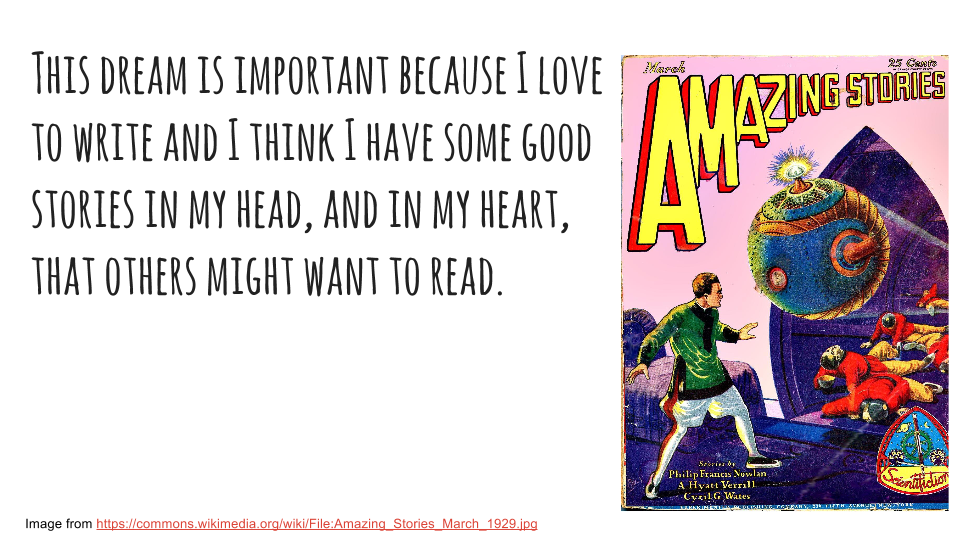
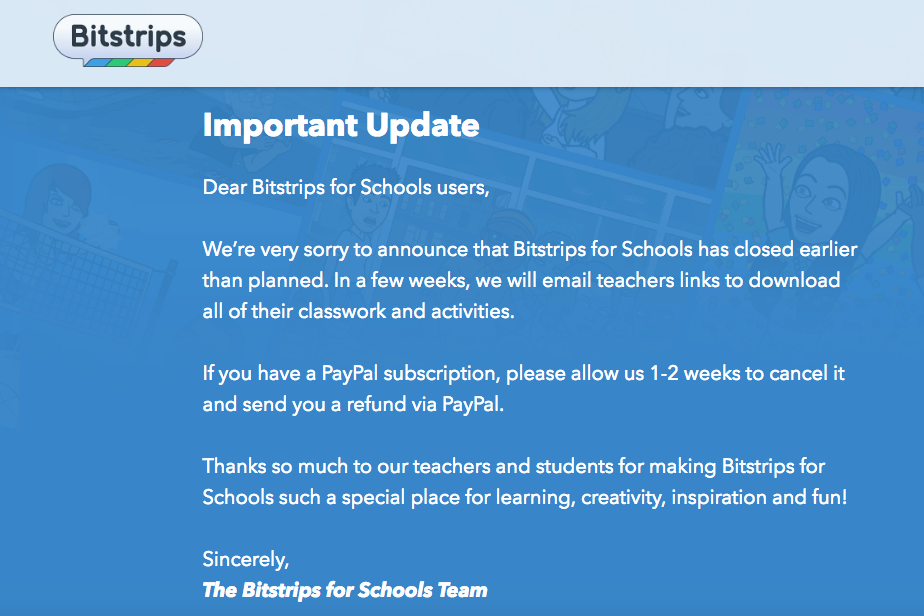
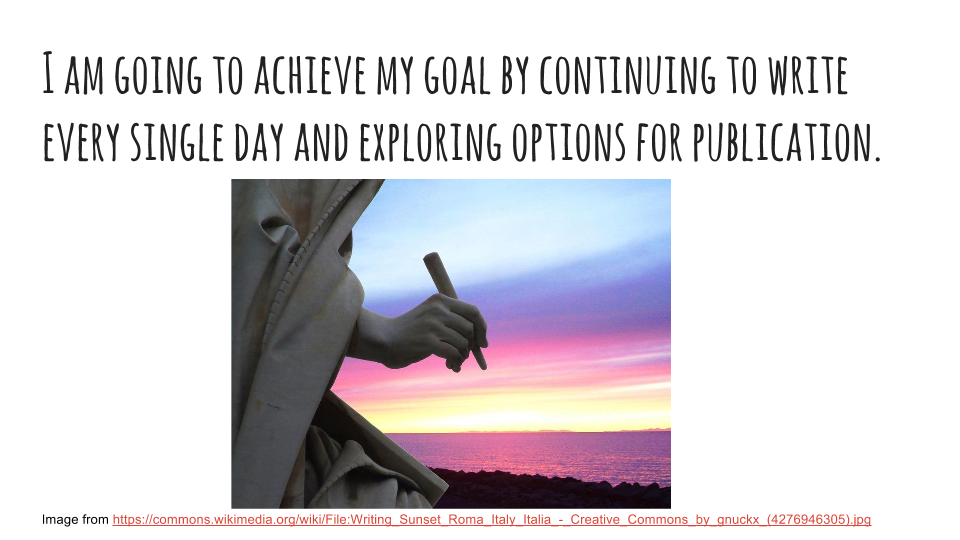
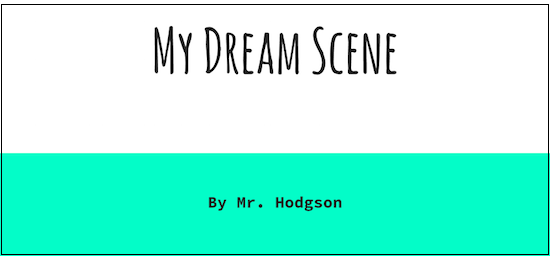
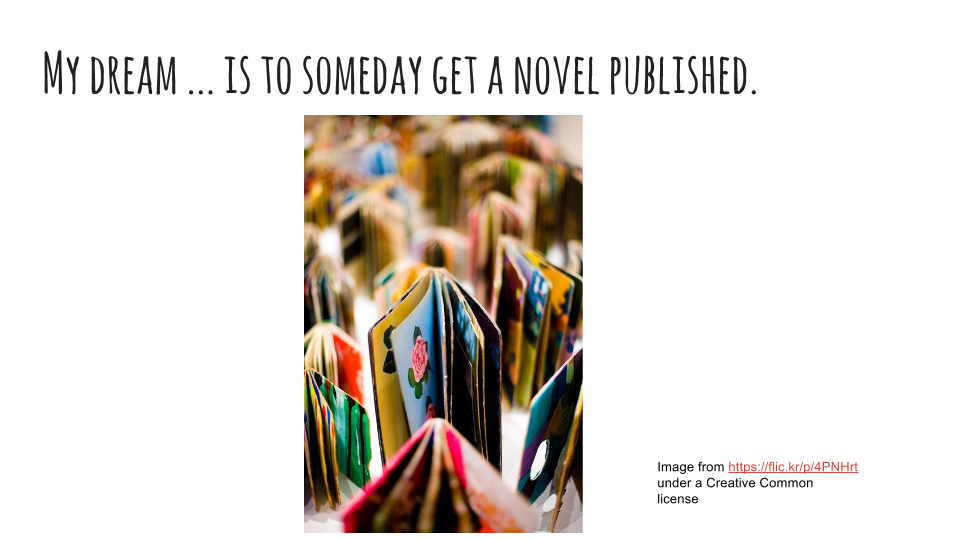
































Kevin,
I like the project idea of Dream Scene. I would love to hear more about the project and see any student examples you might be willing to share.
Brian … As I shared on Twitter, this keyword at my blog might give you more ideas of the Dream Scene project: http://dogtrax.edublogs.org/?s=Dream+scene
Thanks for asking. Share out if you try it.
Kevin
Having led a small, under funded, non-profit youth program for 20 years, I really understand the frustration, challenge and opportunity that you’ve expressed. Doors constantly close as free tech becomes costly tech, as volunteers disappear, as computer upgrades reach beyond affordability. Having a clear vision of what you’re trying to do, such as connecting with your students, enables you to open new paths when the old ones are closed. Being part of the #clmooc and other networks is a huge advantage because you’re constantly able to draw upon the ideas, experiences and resources of others to help you overcome what ever obstacles appear. Teaching students (who become adults) to build clear visions, or senses of purpose, and to learn to find ways to achieve that vision, is one of the greatest things you and others who work with students can do.
Thank you, Daniel. New paths emerge out of old paths, and new opportunities emerge out of lost ones. We just have to be open to the change, and keep our focus on the youths in front of us — whether it is in our classroom or in a support system like your Tutor Mentor project.
Kevin
In the late 1990’s I used a beta online environment called “Vicinities”. It allowed my students to instant message, participate in threaded discussions, and upload and share files. We had two good years before its developers refined their product, and created “MyFamily.com”, which I subscribed to with my family, but abandoned as a classroom tool.
Without this “free” testing, we wouldn’t have the wonderful online tools available to us. Teachers are now using other environments for free, that I am sure will soon move into the paid realm as well.
But others will be along soon. The fun is finding, exploring, and teaching your students how to do the same.
Hi Terry
I agree. There is learning for the teaching in discovering the new. I guess the lesson for us is to never get too stuck in doing things one way.
Kevin
If interested, here is a video collection of their dreams (only one slide per student, though).
https://www.youtube.com/watch?v=fVHEx8Q3Tgc
Kevin